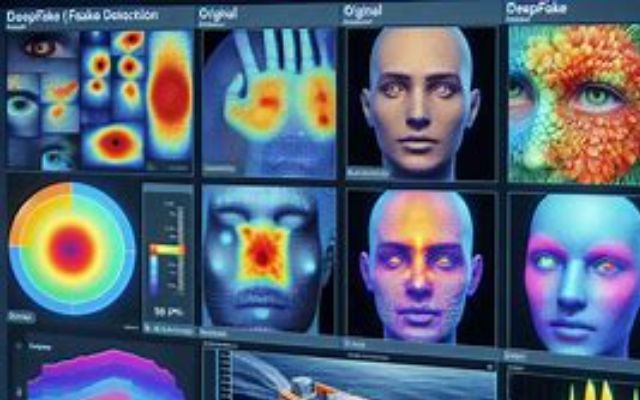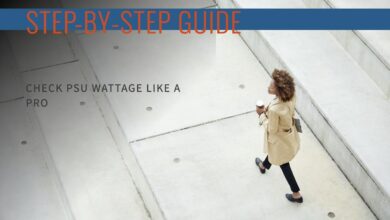BioID’s Deepfake Detection: A Powerful Tool in the Battle Against Digital Deceit
Explore BioID’s Deepfake Detection software, a powerful tool in the fight against digital deception. Learn about its capabilities and challenges.

In the ever-evolving digital landscape, BioID’s Deepfake Detection emerges as a beacon of hope. This powerful tool is designed to combat the growing menace of deepfakes, which are becoming increasingly sophisticated and prevalent. Deepfakes, artificial intelligence-generated images or videos that impersonate real individuals, pose a significant threat to personal and societal security. They can be used to spread misinformation, commit fraud, and even destabilize political landscapes.
BioID’s Deepfake Detection is a cutting-edge solution that aims to nip this problem in the bud. It leverages advanced algorithms and machine learning techniques to identify and flag deepfakes, thereby helping to maintain the integrity of digital content. As we delve deeper into this topic, we will explore the workings of this software, its effectiveness, and its potential impact on our digital future. Stay tuned as we unravel the intricacies of this fascinating technology.
Understanding Deepfakes
Deepfakes, a portmanteau of “deep learning” and “fake”, are synthetic media in which a person’s likeness is replaced with someone else’s. This technology uses artificial intelligence and machine learning algorithms to create hyper-realistic images and videos that are almost indistinguishable from the real thing.
The potential threats posed by deepfakes are significant. They can be used to spread misinformation, commit fraud, and even destabilize political landscapes. As deepfake technology advances, efforts aim to detect misuse and maintain trust in multimedia.
In response to these threats, BioID, a German biometrics company, has launched a new version of its deepfake detection software. This software employs sophisticated algorithms, leveraging artificial intelligence to verify the authenticity of visual content. It is designed to prevent identity spoofing through deepfakes, AI-manipulated, and AI-generated content.
The software works by analyzing facial features, gestures, and other elements in videos. These algorithms are trained on large datasets of real and synthetic (deepfake) videos. After identifying the patterns and anomalies of the dataset, the detection distinguishes between genuine and manipulated content.
In the landscape of advanced digital manipulation, reliable deepfake detection software is highly in demand. BioID’s deepfake detection software is a powerful tool in this battle, providing a strong defense against the growing threat of deceptive media in identity verification processes.
BioID’s Deepfake Detection Software
BioID, a German biometrics company, has launched a new version of its deepfake detection software. This software employs sophisticated algorithms, leveraging artificial intelligence to verify the authenticity of visual content. It is designed to prevent identity spoofing through deepfakes, AI-manipulated, and AI-generated content.
The software works by analyzing facial features, gestures, and other elements in videos. These algorithms are trained on large datasets of real and synthetic (deepfake) videos. After identifying the patterns and anomalies of the dataset, the detection distinguishes between genuine and manipulated content.
In the landscape of advanced digital manipulation, reliable deepfake detection software is highly in demand. BioID’s deepfake detection software is a powerful tool in this battle, providing a strong defense against the growing threat of deceptive media in identity verification processes.
The software also analyzes inconsistencies in lighting, shadows, and reflections. It can identify four main types of deepfakes: identity swap, face reenactment, attribute manipulation, and face synthesis.
BioID’s software service secures customers’ systems from identity fraud. It is part of BioID’s engagement in FAKE-ID, a project on deepfake detection funded by the German Federal Ministry of Education and Research (BMBF).
The software offers real-time analysis and feedback on both photos and videos. It is easy to integrate, ready to enhance any online service. It also complies with industry standards, as confirmed by two independent FIDO-accredited testing laboratories.
The Power of BioID’s Deepfake Detection
In the face of advanced digital manipulation, BioID’s Deepfake Detection software stands as a formidable defense. It employs sophisticated algorithms and artificial intelligence to verify the authenticity of visual content. This software is a powerful tool in the battle against the growing threat of deceptive media in identity verification processes.
BioID’s software works by analyzing facial features, gestures, and other elements in videos. These algorithms are trained on large datasets of real and synthetic (deepfake) videos. After identifying the patterns and anomalies of the dataset, the detection distinguishes between genuine and manipulated content.
The software also analyzes inconsistencies in lighting, shadows, and reflections. It can identify four main types of deepfakes: identity swap, face reenactment, attribute manipulation, and face synthesis.
BioID’s software service secures customers’ systems from identity fraud. It is part of BioID’s engagement in FAKE-ID, a project on deepfake detection funded by the German Federal Ministry of Education and Research (BMBF).
The software offers real-time analysis and feedback on both photos and videos. It is easy to integrate, ready to enhance any online service. It also complies with industry standards, as confirmed by two independent FIDO-accredited testing laboratories.
Challenges and Limitations
While BioID’s Deepfake Detection software is a powerful tool in the fight against digital deception, it is not without its challenges and limitations.
One of the primary challenges is the rapid advancement of deepfake technology itself. Deepfakes are becoming increasingly sophisticated, making them harder to detect. The tools behind deepfakes have seen remarkable improvements in usability and quality since their inception. This improvement, combined with the increased digitization driven by the COVID-19 era and the delay in protection legislation, has created a worrisome combination.
Another challenge is the vast amount of data required for the software to be effective. The software needs to be trained on large datasets of real and synthetic (deepfake) videos. Generating these datasets, especially ones that are ethnically and gender-diverse, can be a daunting task.
Furthermore, while the software is effective in detecting deepfakes, it may not be as effective in preventing them. Deepfake creators can potentially use the same software to test their deepfakes and refine them until they pass the detection.
Lastly, there are also concerns about privacy and consent. The use of personal images and videos for training the software raises questions about data privacy.
Despite these challenges, BioID’s Deepfake Detection software remains a crucial tool in the battle against digital deceit. It represents a significant step forward in the field of cybersecurity and continues to evolve in response to the ever-changing landscape of digital manipulation.
FAQ
What is BioID’s Deepfake Detection software?
BioID’s Deepfake Detection software is a tool that uses artificial intelligence and machine learning to detect deepfakes, which are synthetic media where a person’s likeness is replaced with someone else’s.
How does BioID’s Deepfake Detection software work?
The software works by analyzing facial features, gestures, and other elements in videos. It uses algorithms trained on large datasets of real and synthetic videos to distinguish between genuine and manipulated content.
What are the key features of BioID’s Deepfake Detection software?
The software offers real-time analysis and feedback on both photos and videos. It is easy to integrate and complies with industry standards.
What are the challenges and limitations of BioID’s Deepfake Detection software?
While the software is effective in detecting deepfakes, it may not be as effective in preventing them. Also, the rapid advancement of deepfake technology and the vast amount of data required for the software to be effective pose significant challenges.
How does BioID’s Deepfake Detection software contribute to cybersecurity?
BioID’s Deepfake Detection software is a crucial tool in the battle against digital deceit. It helps maintain trust in the digital world by preventing identity spoofing through deepfakes, AI-manipulated, and AI-generated content.
Conclusion: BioID’s Deepfake Detection – A Powerful Ally in the Digital Age
BioID’s Deepfake Detection software represents a significant advancement in the fight against digital deception. Despite the challenges and limitations, it stands as a powerful tool in the battle against the growing threat of deepfakes.
The software’s sophisticated algorithms and artificial intelligence capabilities make it a formidable defense against the misuse of digital identities. It is a testament to BioID’s commitment to maintaining trust in the digital world.
As deepfake technology continues to evolve, so too must our defenses. BioID’s Deepfake Detection software is a crucial part of this ongoing battle. It is a beacon of hope in an increasingly complex digital landscape.
In the face of advanced digital manipulation, we can take comfort in knowing that tools like BioID’s Deepfake Detection software are working tirelessly to safeguard our digital identities. The battle against digital deceit continues, and BioID’s software is a powerful ally in this fight.






